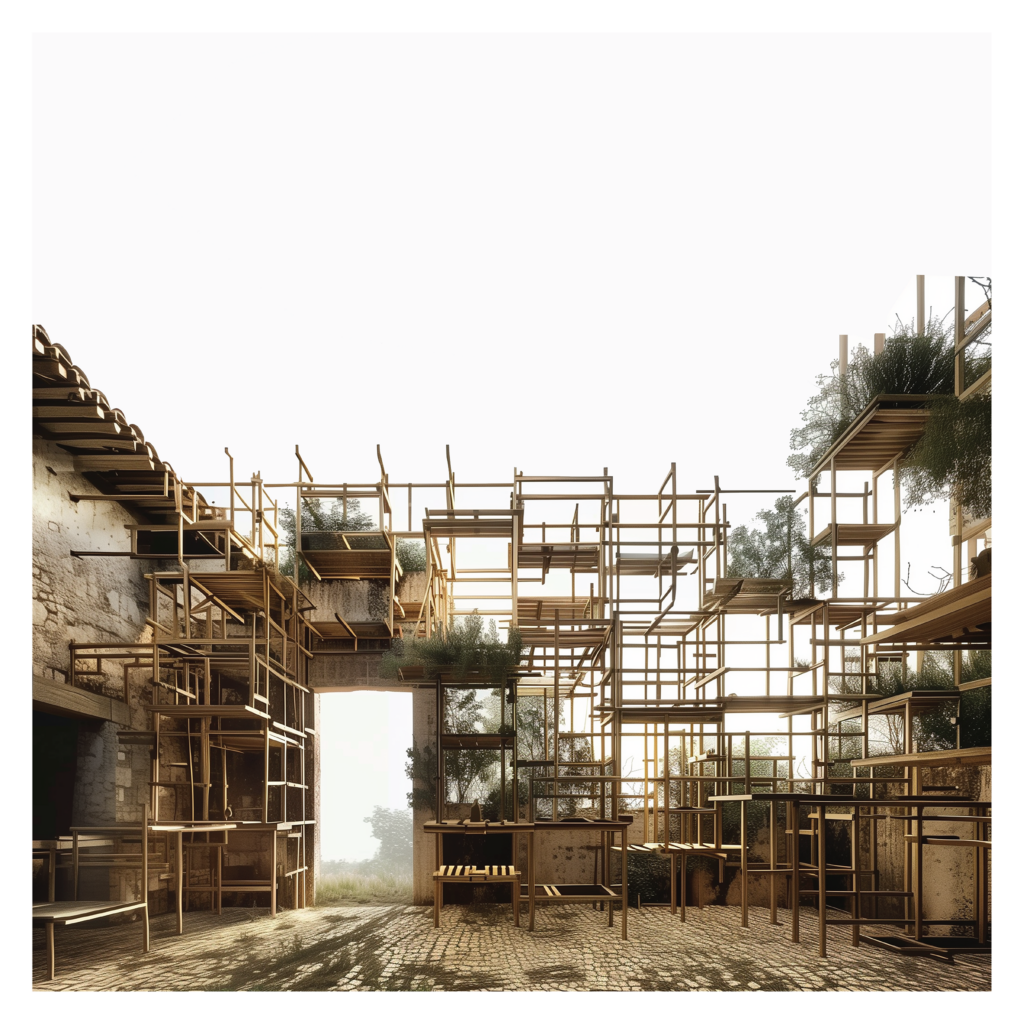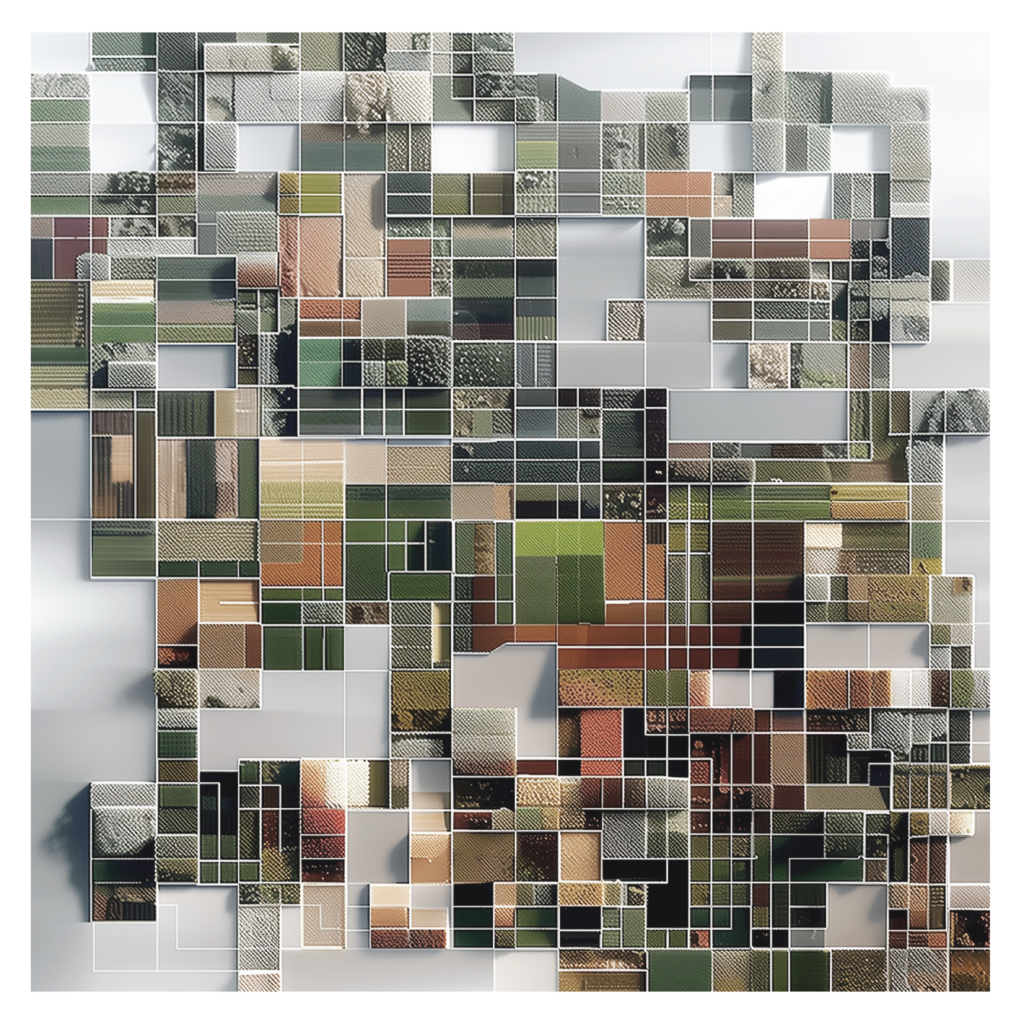Metagrid represents a new way to explore urbanism, tailored for the context and its stakeholders. This project redefines ‘Agriculture’ to encompass not only the process of production but also broader elements like programs, solicitations, patterns, matters, behaviors, and networks, enabling innovative, open strategic approaches. Metagrid aims to reactivate Parc Agrari in Llobregat through Land Art, fostering a dynamic interaction between environmental conditions and its Stakeholders, by transforming the landscape into vibrant, engaging spaces.
CONTEXT
Parc Agrari is located in the lower valley and delta of the Llobregat is one of the oldest and most fertile agricultural zones in the country—a cultural, economic, and ecological heritage of the highest order nestled within Catalonia’s most densely populated region. It is surrounded and well connected by a network of highways connecting the peri urban areas to the city and situated right to the north of El Prat, Barcelona international airport. However, in recent times, the Parc Agrari has faced challenges with numerous crop lands falling into abandonment and now urgently requires revitalization to restore it.
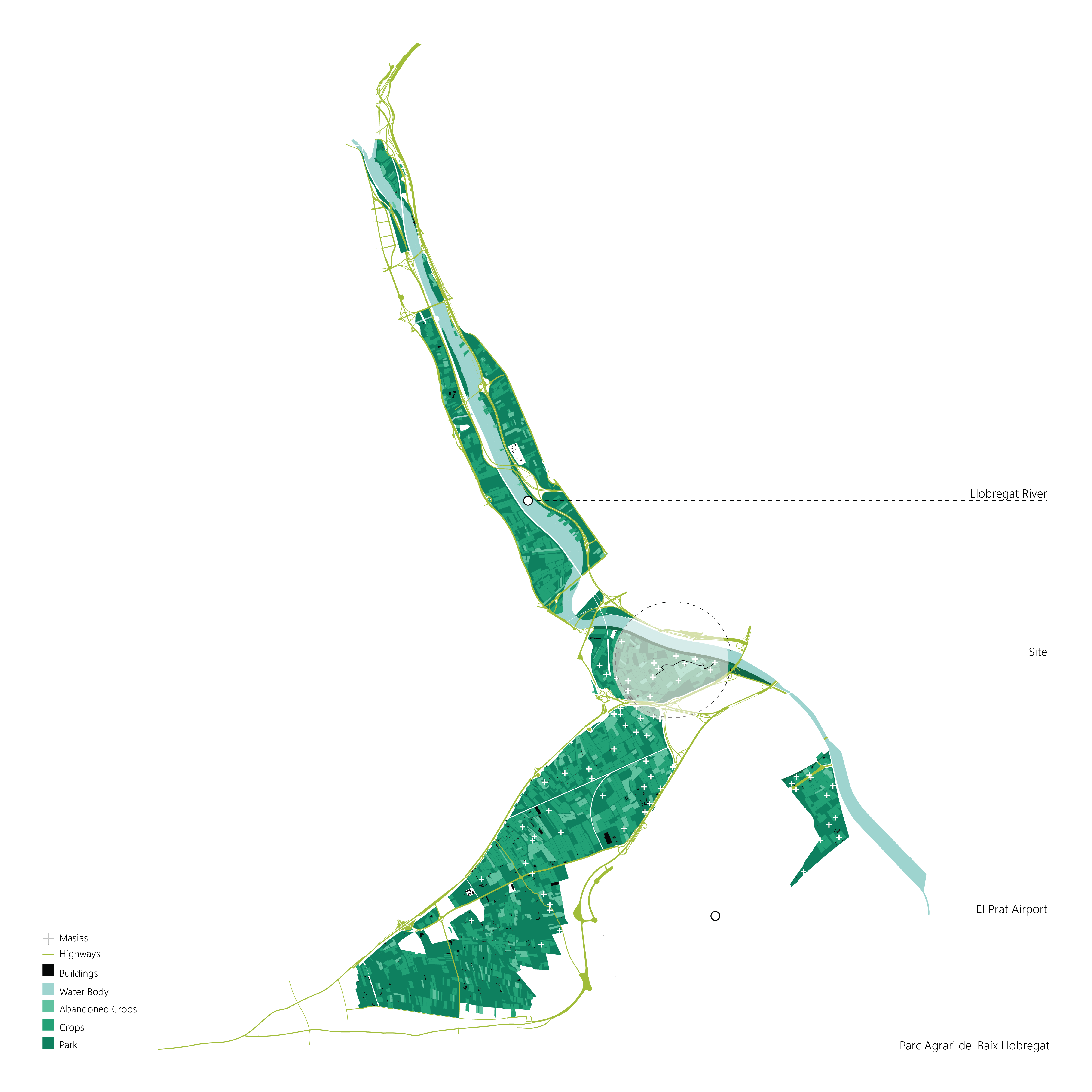
La Masia
A Spanish country house, also known as a “casa de campo”, is a traditional rural dwelling that has become an icon of the Spanish countryside. These homes are often located in the heart of the countryside and were typically used as farmhouses, where farmers and their families lived and worked the surrounding land.
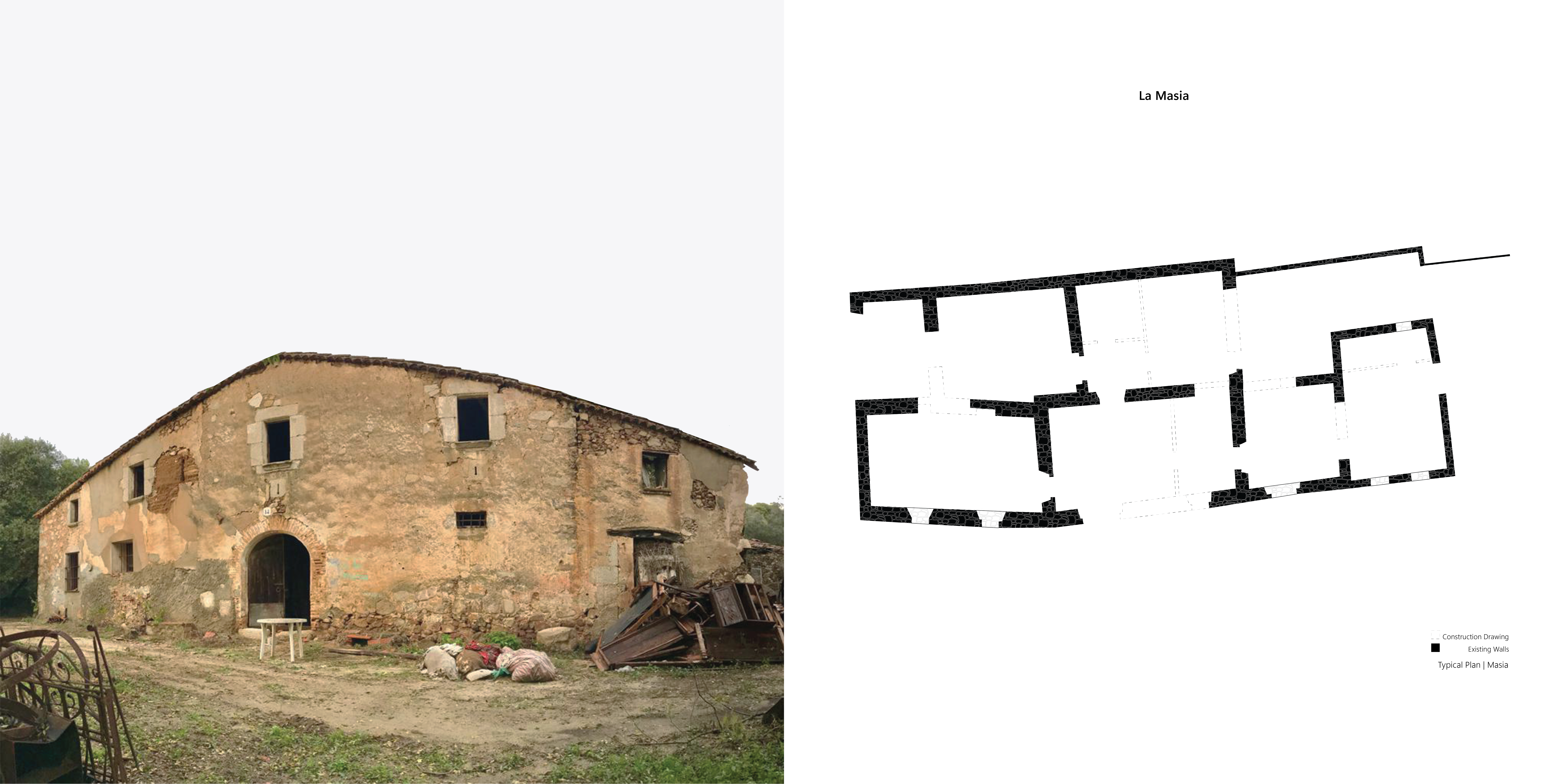
CONCEPT
Aiming to design a LandArt installation, we began by exploring the depiction of land/territory in art. Paul Klee’s work serves as a prime example of how territory can be deconstructed and visualized in a more abstract manner. Today, with technological advancements, our understanding of land extends beyond mere visualization; it can now be analyzed in various ways. A notable example is the use of satellite images and machine learning algorithms for crop identification, converting vast amounts of data into a regular grid format. The grid, traditionally used for organization, has long been explored in art. For Piet Mondrian, it symbolized the universal harmony of the world, as seen in his work where he transformed the regular grid into irregular patterns, reflecting a deeper order beneath surface appearances. Presently, a specific type of irregular grid gaining attention is the quadtree, which serves as a density-based grid for points or numerical values, converting images (paintings/satellite) into abstract patterns.
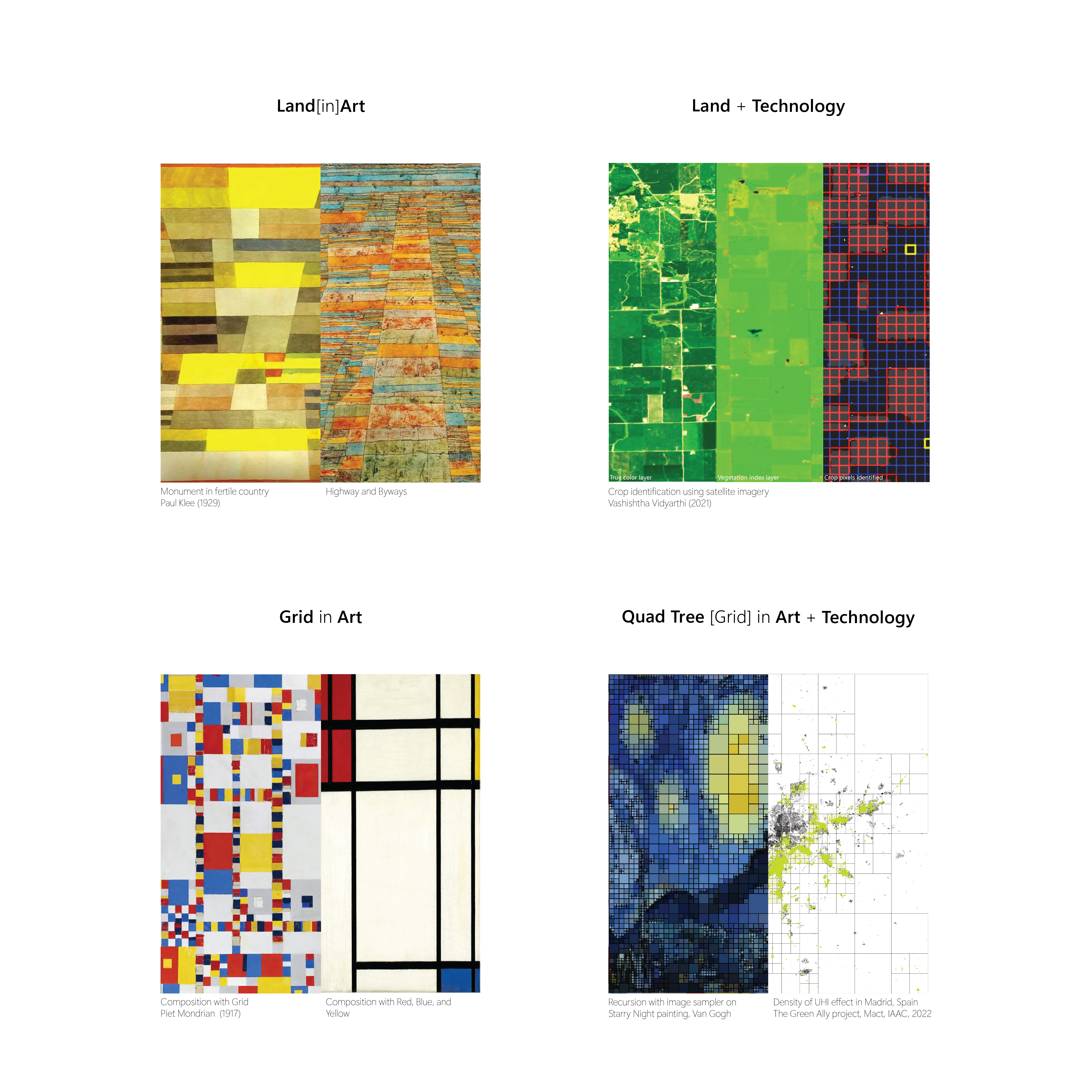
Conceptual Keywords
- #Pixelization: The process of converting an image or graphic into a pixelated form.
- #Irregular(ity) patterns: Patterns that lack regularity or uniformity in their arrangement or appearance.
- #Scalability: The ability of a system, network, or process to handle growing amounts of work or to be easily expanded or upgraded.
- #Modularity: The quality of being composed of separate, standardized, and interchangeable components or modules.
- #Disassembly: The act of taking apart or breaking down something into its constituent parts or components
- #Adaptability: The capacity of a system, process, or individual to alter its behavior or structure in response to changing circumstances.
The conceptual aspect of the proposal aims to preserve two conditions simultaneously: the old and the new. It seeks to integrate the traditional masia typology with the intervention, wherein the intervention will reactivate the masia typology while the masia itself will serve as a supporting structure for the intervention’s development.
PROGRAM
MetaGrid outlines the pathway from production to consumption, highlighting the potential to streamline the food chain. By shortening this chain, the model suggests direct channels from farmers to consumers through venues like farmers’ markets, reducing the need for intermediaries like wholesalers, storage facilities, and supermarkets, thereby diminishing associated energy use and packaging processes.
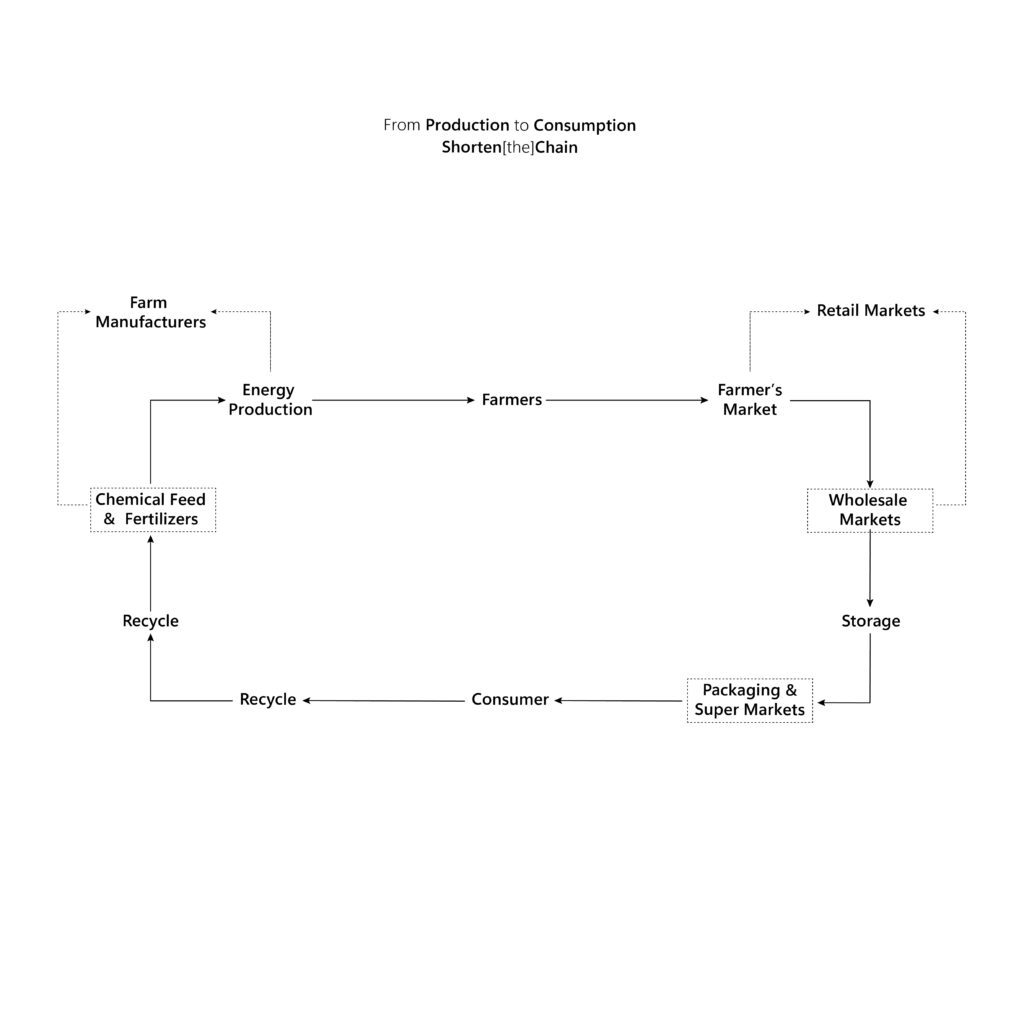
Crops
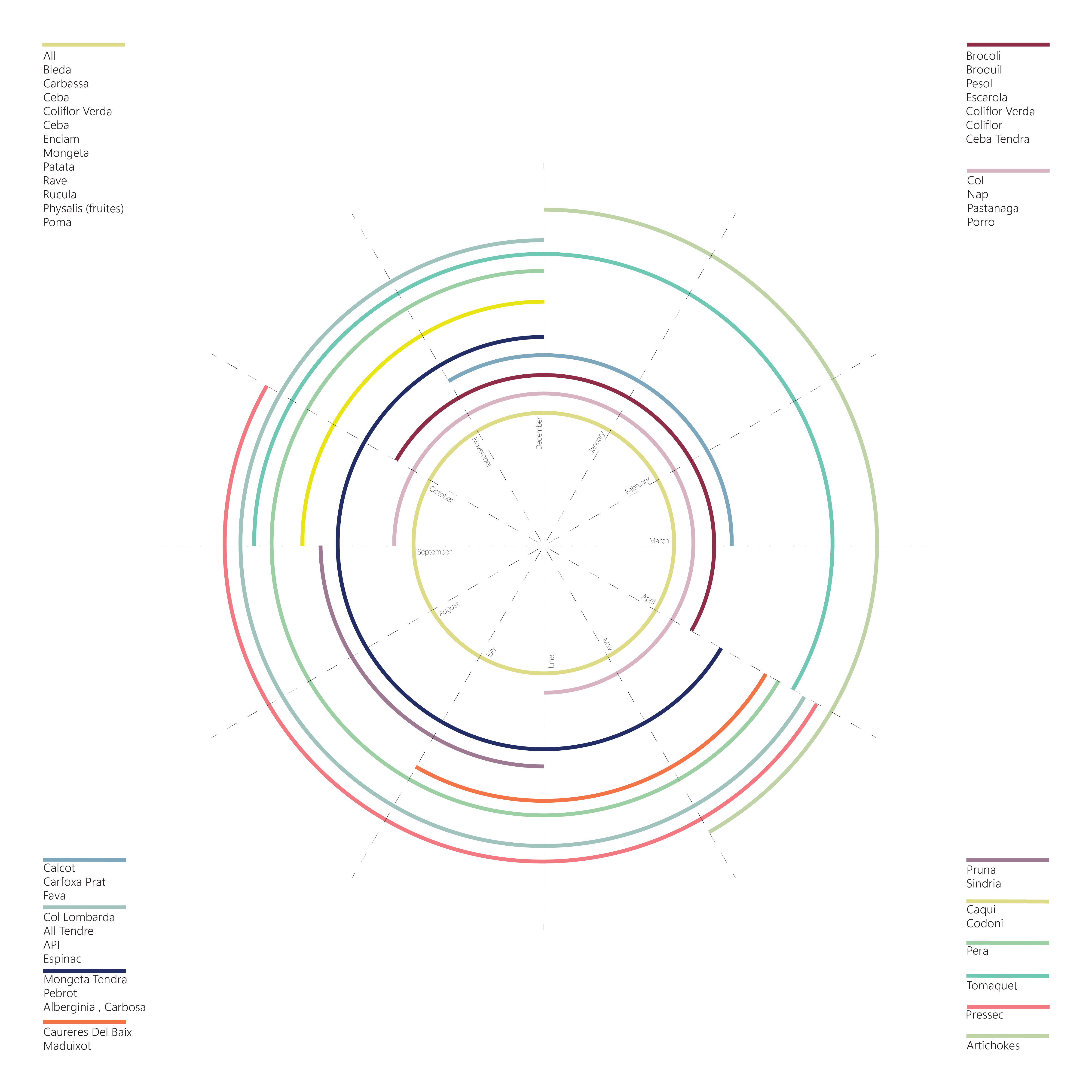
The diagram illustrates the rich tapestry of crops in Parc Agrari, with artichokes reigning supreme, occupying a quarter of the cultivated land along with other crops like tomatoes, eggplant, carrots etc . In collaboration with the Universitat Politècnica de Catalunya, the park is enhancing crop quality, and capitalizing on the diversity of crops and their respective seasons for a richer harvest strategy.
Program-Uses
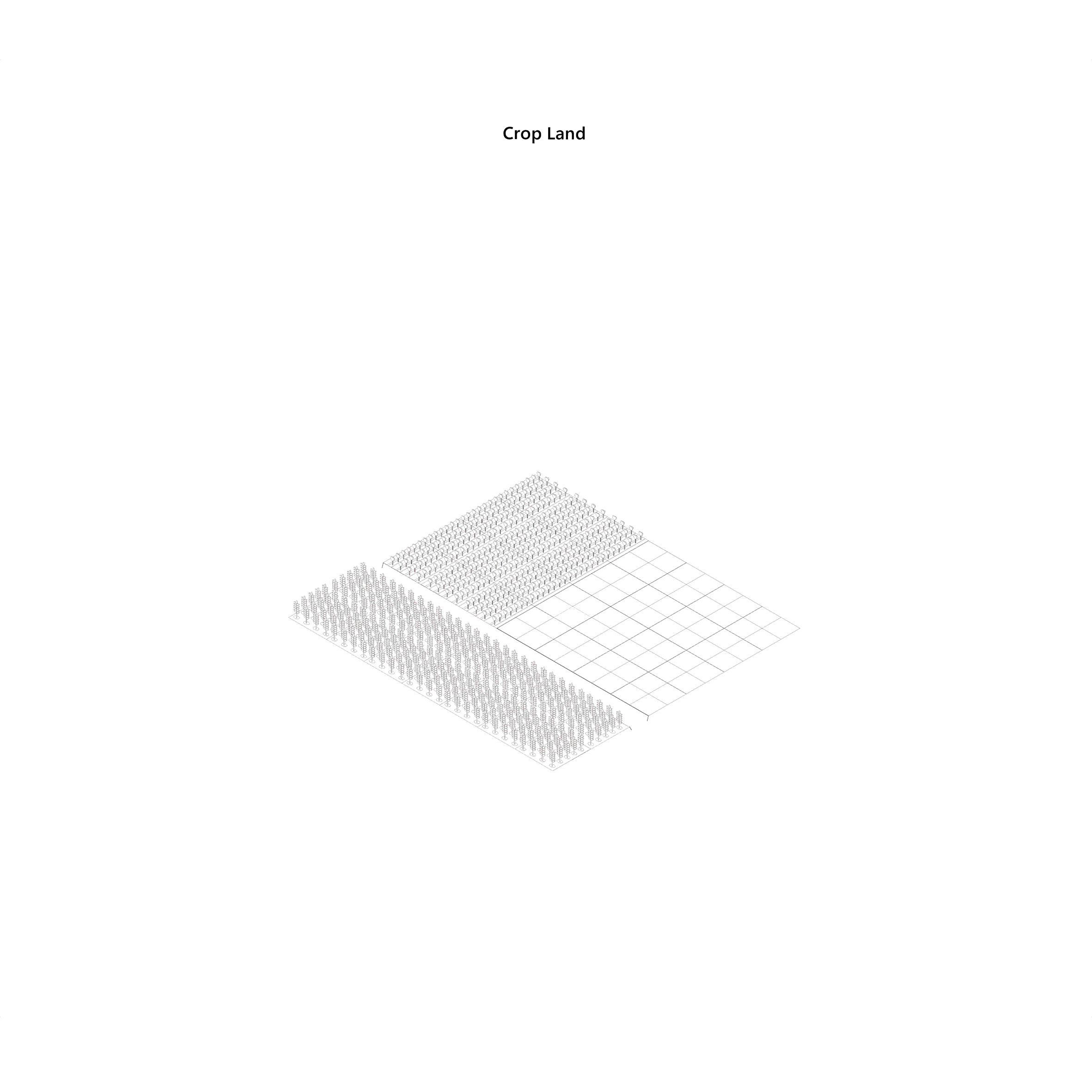
- Croplands consist of cultivation fields divided into varying sizes and crop types including trees for fruits and vegetables by irrigation canals
- Urban farming primarily aims at exploring contemporary farming techniques in urban context to encourage citizen engagement.
- Solar Farm: The vast field gives us an opportunity to harness and produce energy making it a self sufficient initiative. This can be spread across various portions of the field as feasible.
- Farmer’s Market is the key program in promoting our initiative of “Production to consumption”. Shortening the chain and giving people access to fresh produce. It can be explored in ephemeral, easy to assemble structures of Bamboo/Wood in cube modules along with fabric canvas roofing patterns .
- Metagrid aims to welcome citizens of all age-groups, Play area is one such space which lets kids and adults engage with haystacks to define and redefine a dynamic space by interacting.
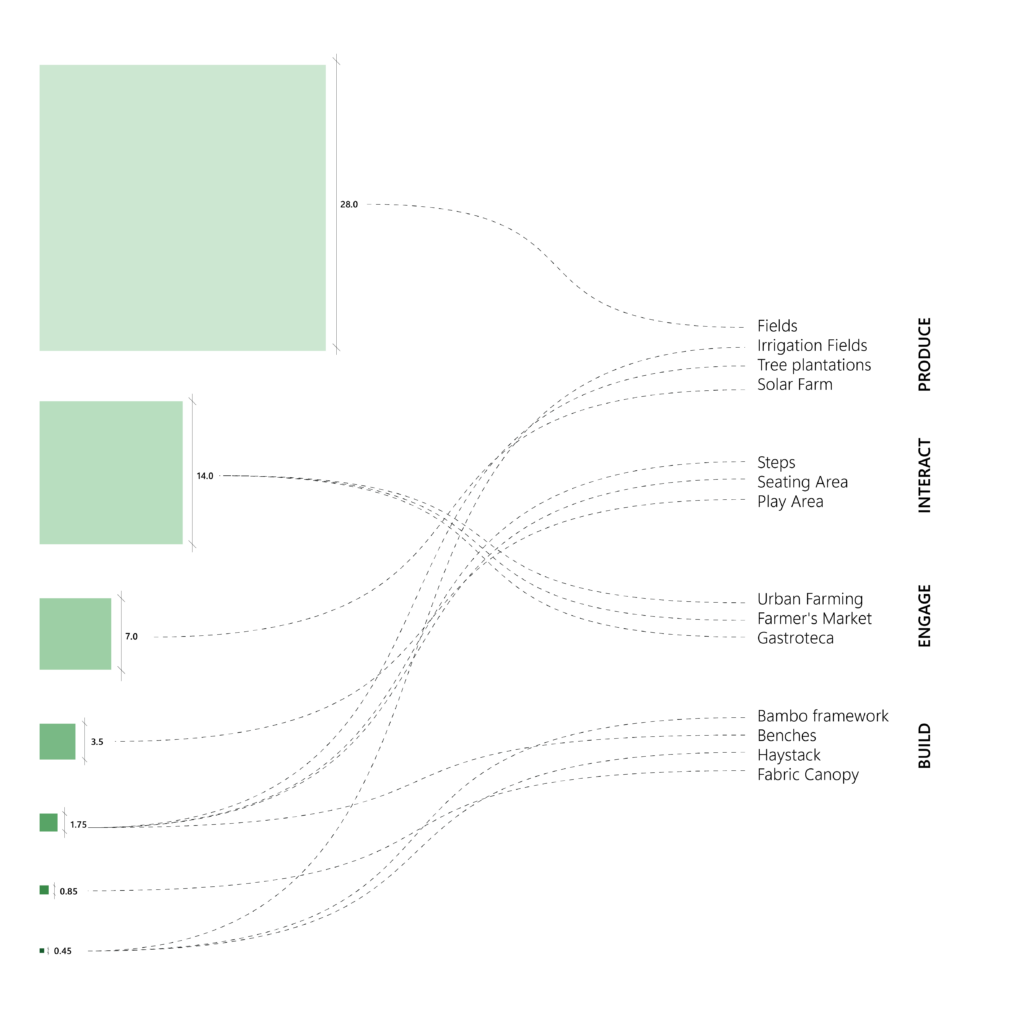
We integrate all these programs in a strategic manner to identify scales of approaches that can be explored based on the sizes of divisions of land along with physical requirements for feasibility.
INTERVENTION
Site
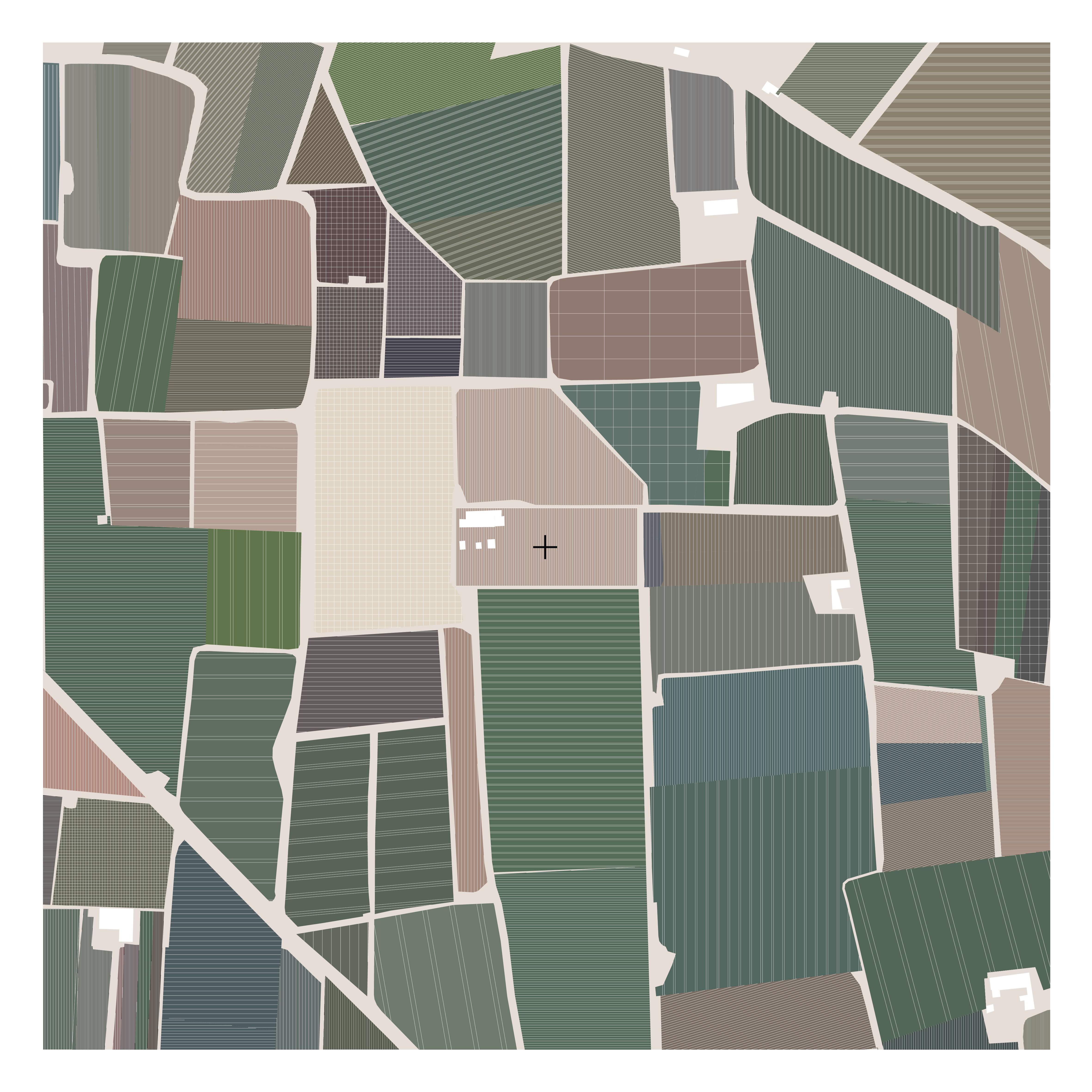
The chosen site is well connected through non uniformly distributed access ways in the center of the park, and is located close to Centre d’Informació i Gestió. Masia Can Comas | Parc Agrari del Baix Llobregat making it easy to access.
Grid-structure [process]

Quadtree is a tree data structure in which each internal node has exactly four children. Quadtrees are the two-dimensional analog of octrees and are most often used to partition a two-dimensional space by recursively subdividing it into four quadrants or regions.
Intervention
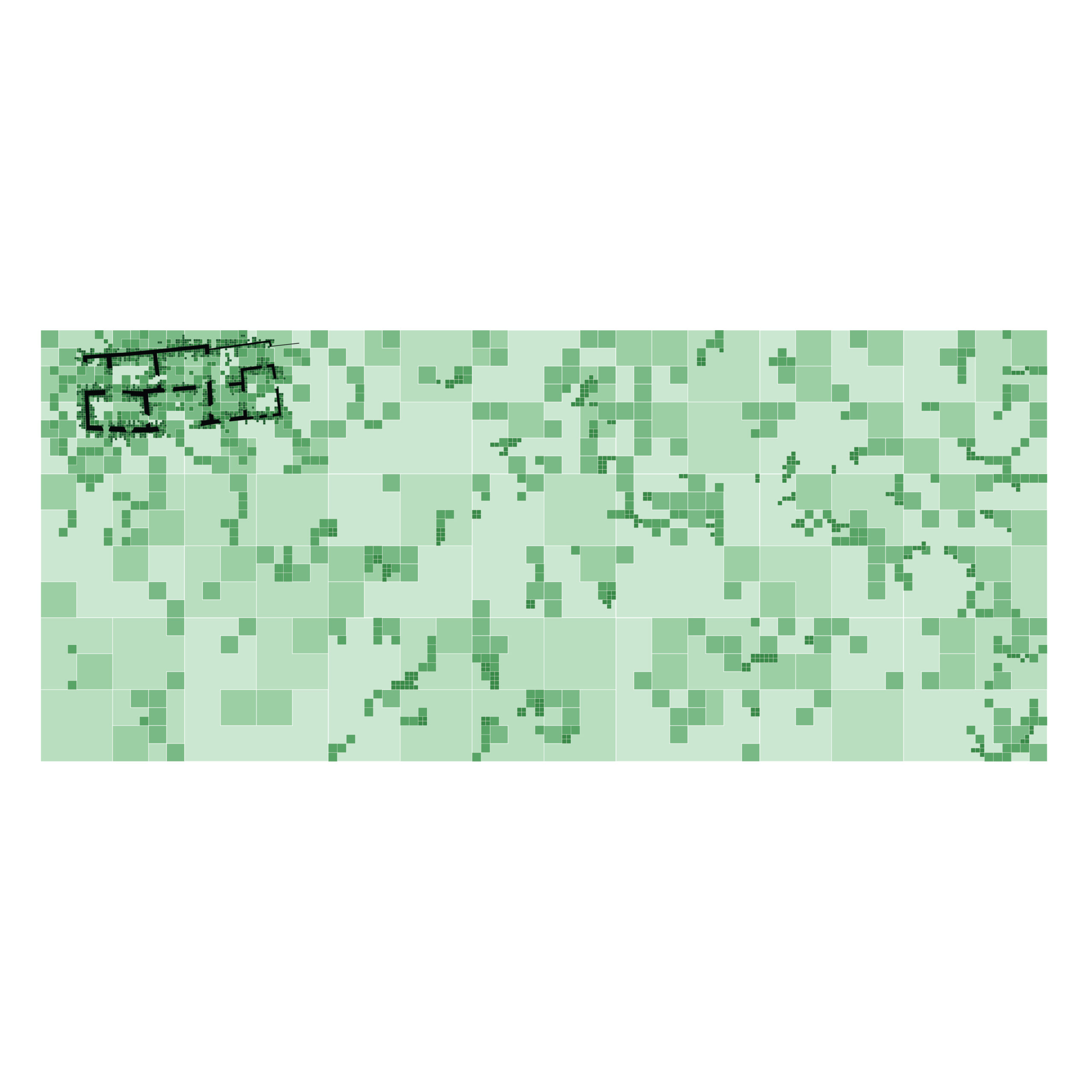
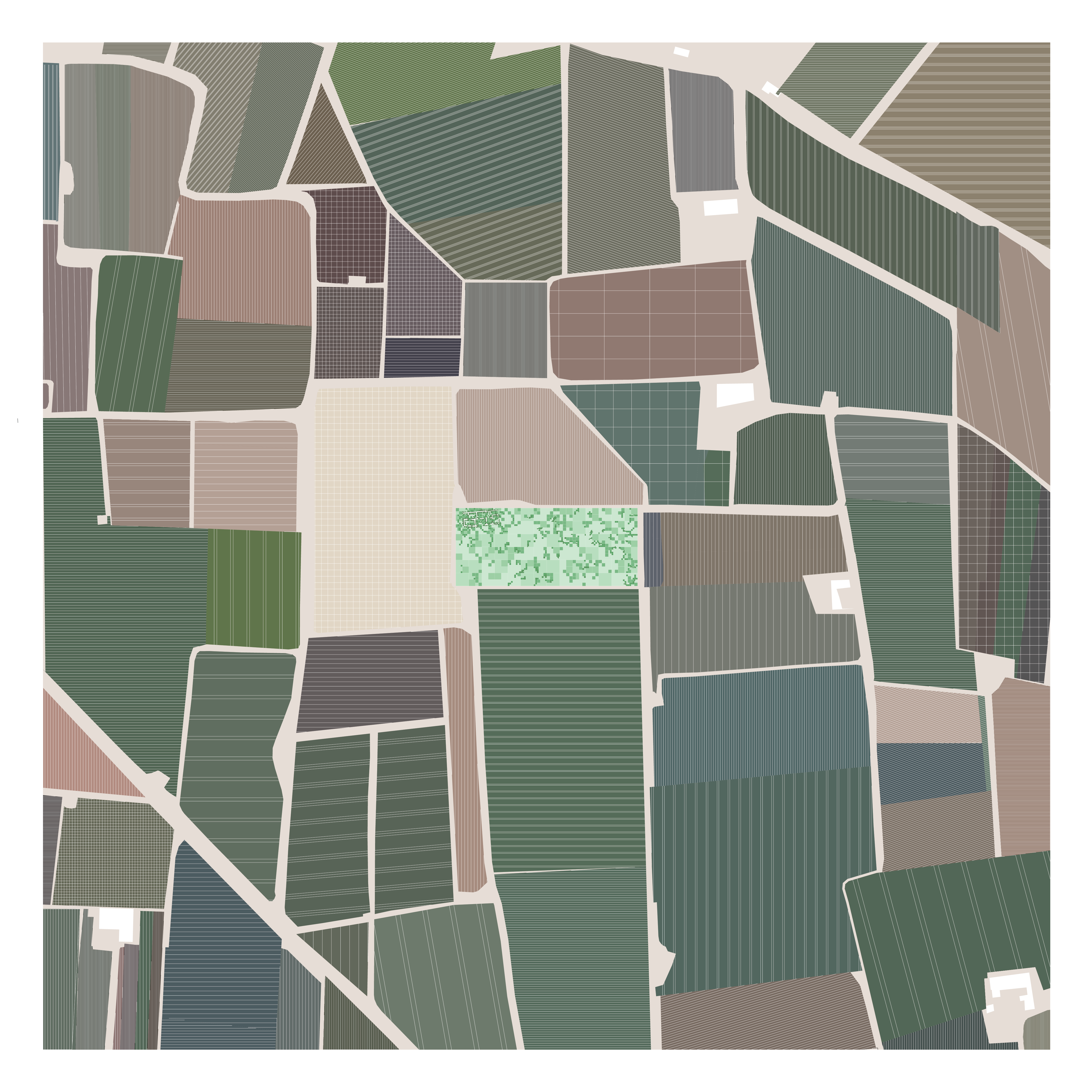
Scales of Intervention
The intervention approach consists of two scales. The first involves revitalizing the Masia through small modules of Wood framework, operating on a micro scale of structure. This approach explores materiality and volume in diverse ways, fostering connections between the old and the new. The second scale engages with the territorial aspect, where fields, when viewed from above in plan, reveal various croplands arranged in a grid pattern with distinct textures and volumes.
